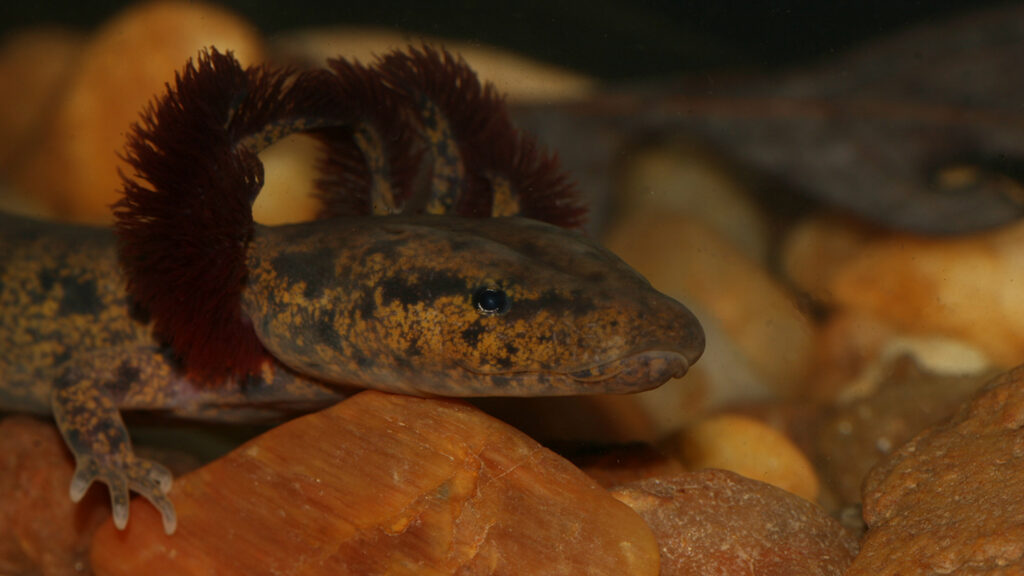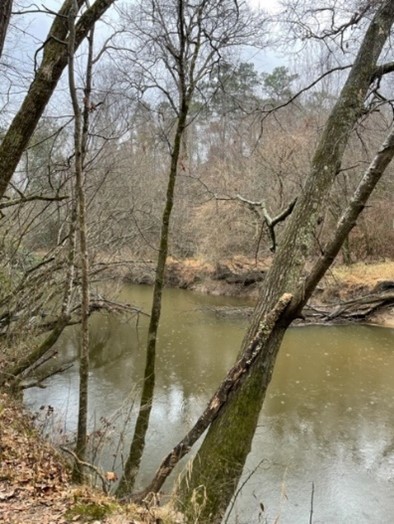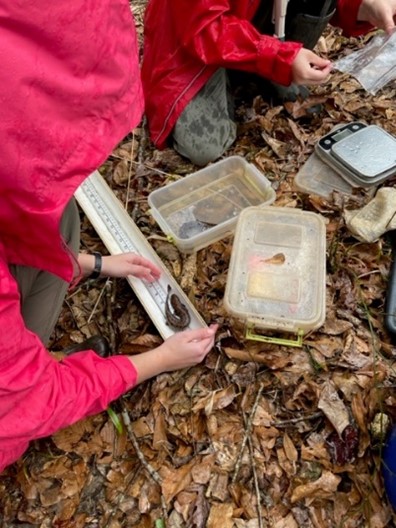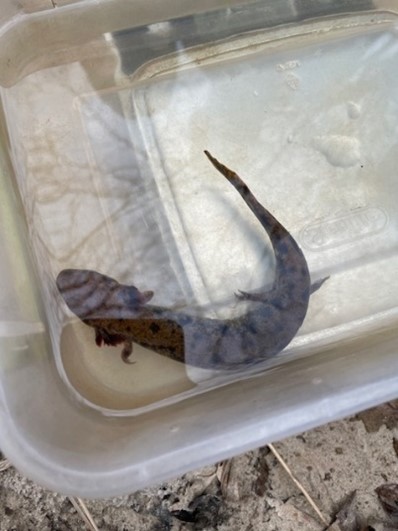By Eric Teitsworth, a master's student in the Fisheries, Wildlife, and Conservation Biology program at…

By Hannah Royal, Stewardship Associate
The Neuse River Waterdog is an endemic species of aquatic salamander only found in the Neuse and Tar-Pamlico River basins of North Carolina. Also known as the Carolina Mudpuppy, it is one of three species of “mudpuppy” found in the state with the others found exclusively in the mountains and coastal plain. Salamanders are a type of amphibian (like frogs) that can inhabit terrestrial or aquatic environments. Although lizard-like in appearance, they have permeable skin that is reliant upon moisture and sensitive to environmental degradation.
Having striking red external gills means that this species never leaves the water. They inhabit streams and rivers and prefer a diverse underwater habitat structure that may include rocks and logjams. Food sources include smaller animals like snails, worms, spiders, and small fish. Since they typically remain concealed during the day and forage at night, getting a sight of one casually is a rare occurrence for the average person. I had the privilege to join NC State's Eric Teitsworth, whose doctoral research focuses on the species, in early 2022 as he did his seasonal sampling in our area. He set up sampling on a couple of TLC-owned properties in Johnston County where we had a successful morning capturing a few larger individuals.



With designations as a Federally Threatened Species in 2021 and a North Carolina Species of Special Concern in 1990, the unique Neuse River Waterdog has faced serious population declines in their range, which includes some of Triangle Land Conservancy’s coverage area (Durham, Orange, Wake, and Johnston Counties). Through current research, it is thought that of the common environmental stressors (such as human development, changes in hydrology, and various sources of pollution, etc.) that increases in sedimentation may be tied to their demise.
Preventing the declines of aquatic species like this could be improved through policy changes and on-the-ground work. Strengthening water quality regulations and maintaining/increasing stream buffer protections, especially in areas of high development risk like the Triangle, would help improve the negative impacts to aquatic communities.
TLC works towards this through collaboration with local officials and organizations to ensure community planning includes responsible consideration of our natural landscapes. TLC also works with private landowners on perpetual conservation easements, fee-simple transactions of property, and transfers/assists with other organizations. Just in the past two years, TLC has worked on projects that protected stream buffers in areas surrounding the Little River and Middle Creek in Johnston and Wake Counties, both areas with known habitat for the Neuse River Waterdog.
Knowledge of Neuse River Waterdogs and the issues they face are growing, and you can help! Researchers at NC State, along with the U.S. Fish and Wildlife Service and the NC Wildlife Commission have created a informational pamphlet (see below!) with a simple, yet comprehensive, description of the species. You'll also learn more about the goals of the team's research, and ways that everyone can help improve watershed health and protect Waterdogs!
